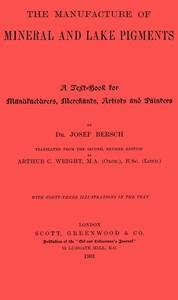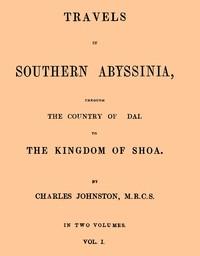Read this ebook for free! No credit card needed, absolutely nothing to pay.
Words: 168520 in 36 pages
This is an ebook sharing website. You can read the uploaded ebooks for free here. No credit cards needed, nothing to pay. If you want to own a digital copy of the ebook, or want to read offline with your favorite ebook-reader, then you can choose to buy and download the ebook.


: The manufacture of mineral and lake pigments by Bersch Josef Wright A C Arthur Columbine Translator - Dyes and dyeing; Pigments
PIGMENTS OF ORGANIC ORIGIN.
THE CONVERSION OF METRIC INTO ENGLISH WEIGHTS AND MEASURES --CENTIGRADE AND FAHRENHEIT THERMOMETER SCALES 469
INTRODUCTION.
It is doubtful whether another branch of applied chemistry is recorded of so great an age as the colour industry; at the present time there is hardly a race on the face of the earth which does not make use of colours in some form, either for the decoration of their persons or surroundings. The art of preparing colours is as ancient as their use. It is true that we find from the most remote historical records that the so-called earth colours were almost solely employed, and principally those which exist ready formed in nature. But these natural colours also require their particular process of preparation before they fulfil their object, even though this be merely a mechanical operation, such as powdering or levigating. That the oldest nations of whom we possess lasting records, either written or otherwise, really understood the preparation of colours by chemical processes is shown by the common occurrence in the Egyptian mural pictures of figures clad in brightly coloured garments, a proof that the Egyptians not only understood the science of colour manufacturing, but also the more advanced art of fastening colours upon fabrics--dyeing.
The writings of the ancient Greeks, and in part also the scanty remains of their buildings, prove to us completely that they understood the use of colours to such an advanced degree that they already employed them for pictures as works of art. That the Greeks were also acquainted with the preparation of colours and dyeing follows from various passages from the classical writers, in which magnificently decorated rooms and beautifully coloured garments are often described.
Among the Romans, who were the pupils of the Greeks in the arts and manufactures, the prodigal luxury which existed in Rome, especially under the emperors, caused a great demand for colours, which were used in the most profuse manner for the decoration of house and attire. The Roman colour makers had advanced so far in their art that they could colour the human hair rose-red.
A glance at East Indian fabrics and pictures, or at the ancient Chinese buildings, whose colouring is a matter of marvel to-day, shows that the Oriental were not behind the Western nations in the discovery of colours and the art of manufacturing them.
In so old an industry it is not remarkable that great changes have taken place in the course of time. The thousands and thousands of experiments made by the alchemists in the attempt to prepare gold failed in their main object, but the tremendous expenditure of time and trouble in this work was not fruitless; upon the great mass of chemical facts discovered by the alchemists were laid the foundations of scientific chemistry. We find on reading the writings of the alchemists that the colour industry is indebted to them for an immense number of its products; the reason being that the alchemists worked by preference on metals, earths and mineral compounds, and from these substances a large number of colours are obtainable, of which many are still in use to-day, and, on account of their cheapness, will continue in use.
We find a similar comparison in the case of the fine scarlet pigment known as vermilion: formerly the natural vermilion, cinnabar, was sold at a very high price; at the present time the finest vermilion, prepared artificially, can be bought at a low rate. It is no longer necessary for any one to use natural Chinese vermilion as an artists' colour.
Whilst formerly mineral colours were used in great preponderance, we now know a great number of vegetable and animal colouring matters. The discovery of the sea route to India and the discovery of America had an important influence in this development. From these countries, as from other tropical lands, come the majority of the plants which contain colouring matters. The attempt to change these colouring matters into insoluble compounds led to the discovery of the lake pigments.
In more recent times, efforts in the colour industry have been especially directed to making colours more permanent and, at the same time, harmless. In the first respect, the position at present leaves much to be desired; but, as regards the second property, great advances have been made. The colours in use in former days were almost all very poisonous compounds; the greater number were derived from lead, copper, mercury or arsenic. More recently these poisonous substances have been in many cases replaced by innocuous materials, so that among the colours now in use, though the list is much more comprehensive than of old, there are but few poisonous to a high degree.
In all civilised states the use of poisonous colours has been much restricted by law, and in those cases in which an article is to be manufactured for use as food the employment of such colouring matters has been absolutely forbidden. For example, in Germany by the law of 5th July, 1887, concerning the use of dangerous colours in the preparation of foods and condiments, the application of the permissible colours has been exactly defined.
Free books android app tbrJar TBR JAR Read Free books online gutenberg
More posts by @FreeBooks


: The home-maker by Fisher Dorothy Canfield - Domestic fiction; Sex role Fiction; Families Fiction; Spouses Fiction







